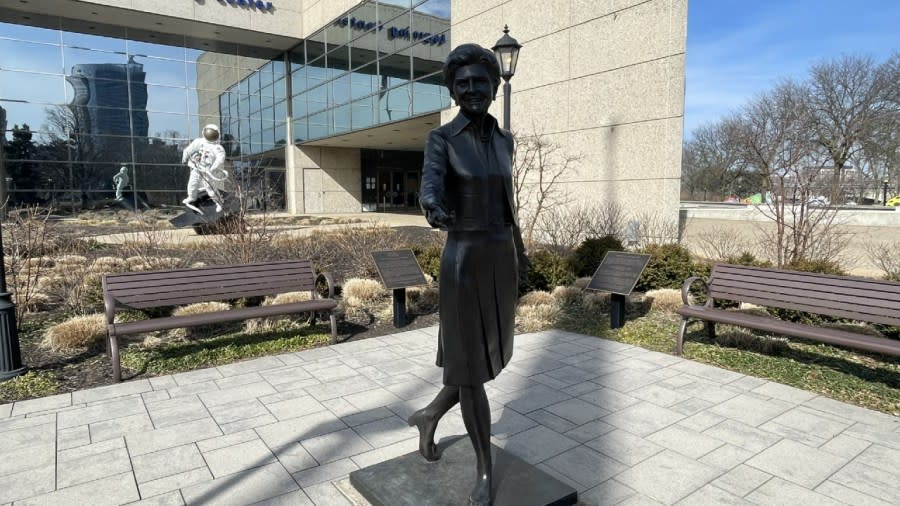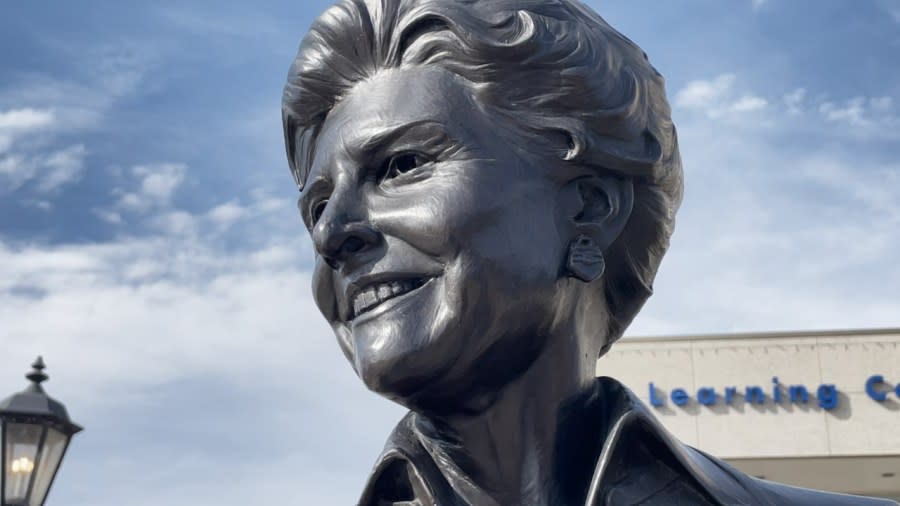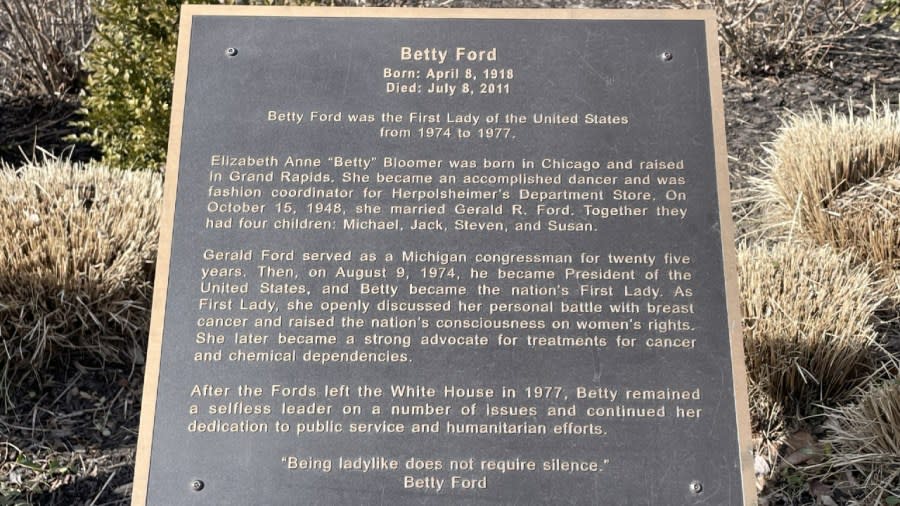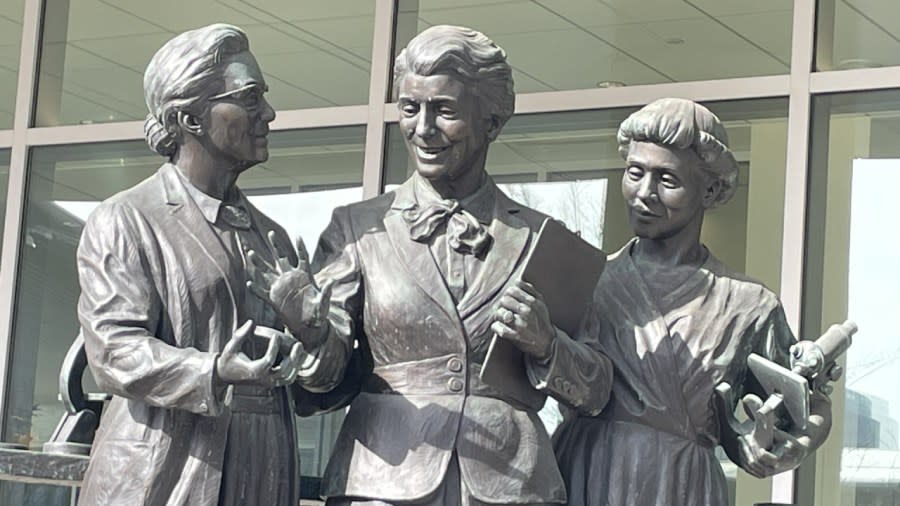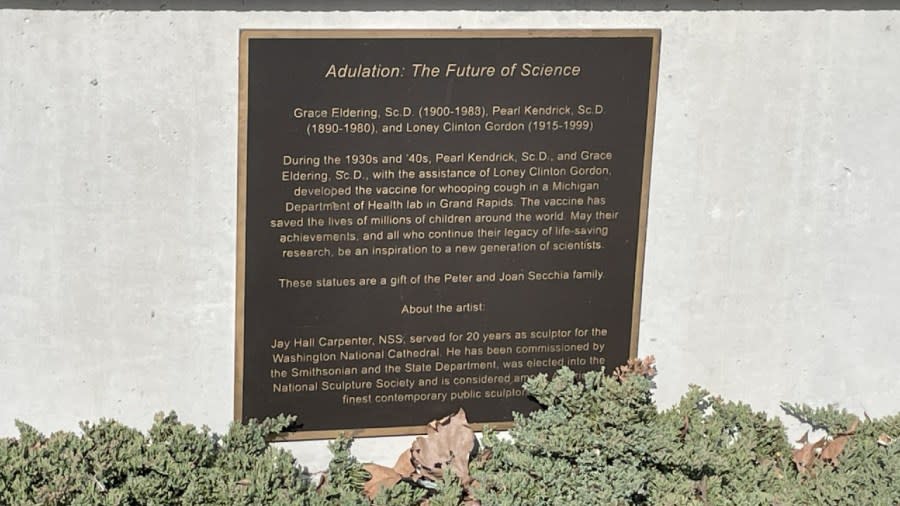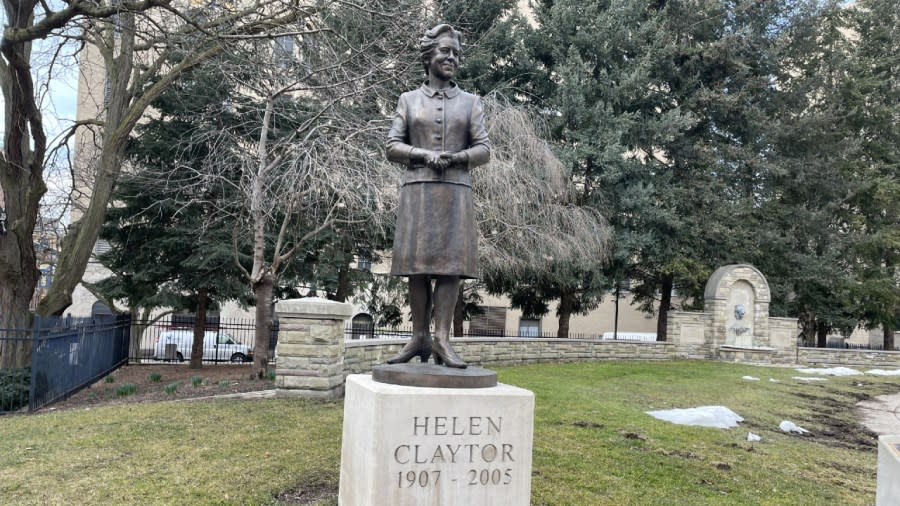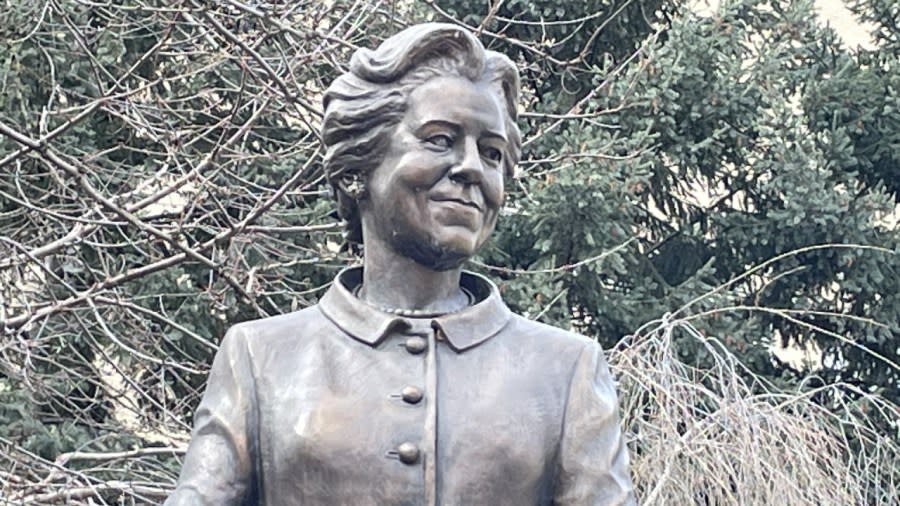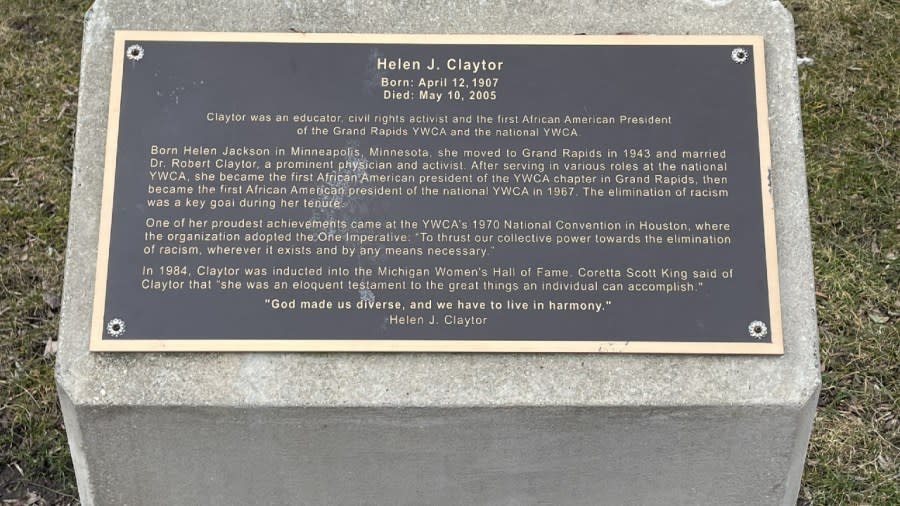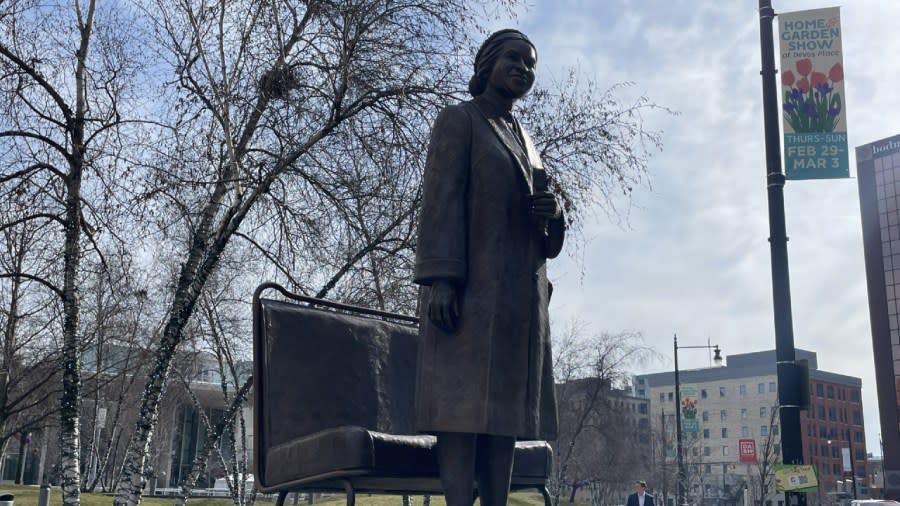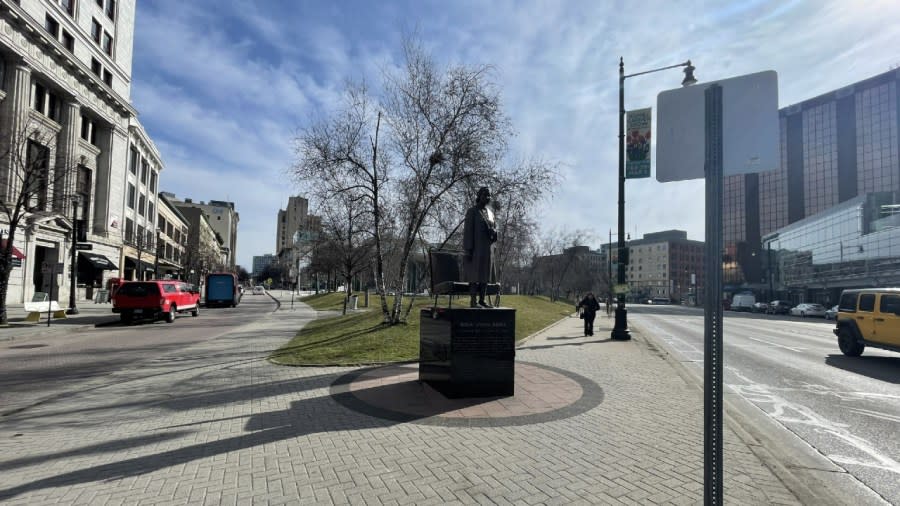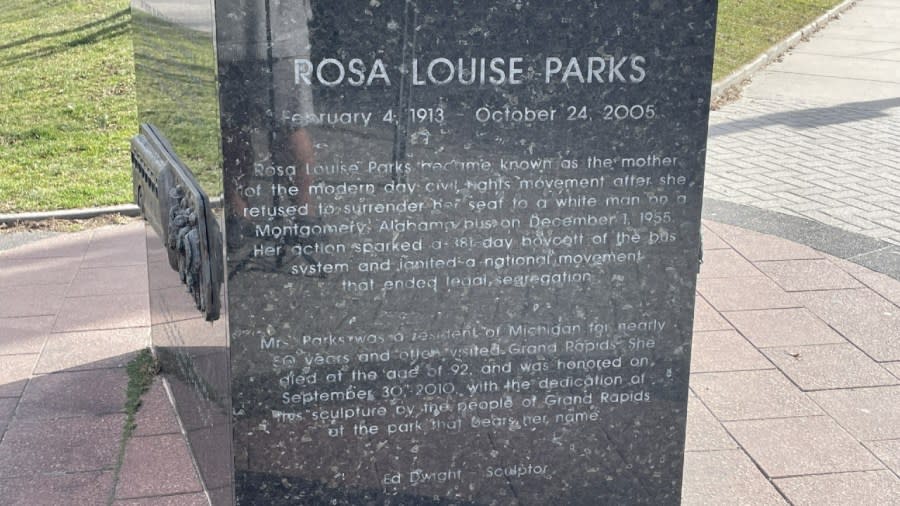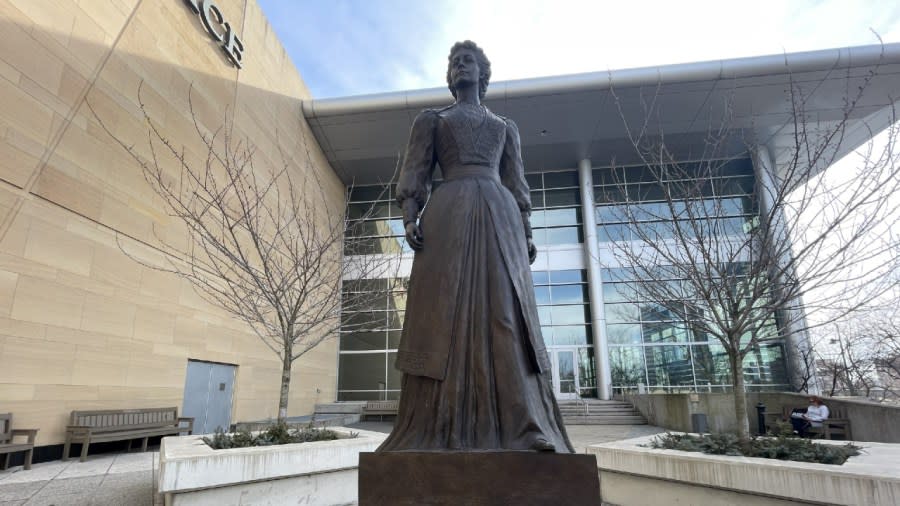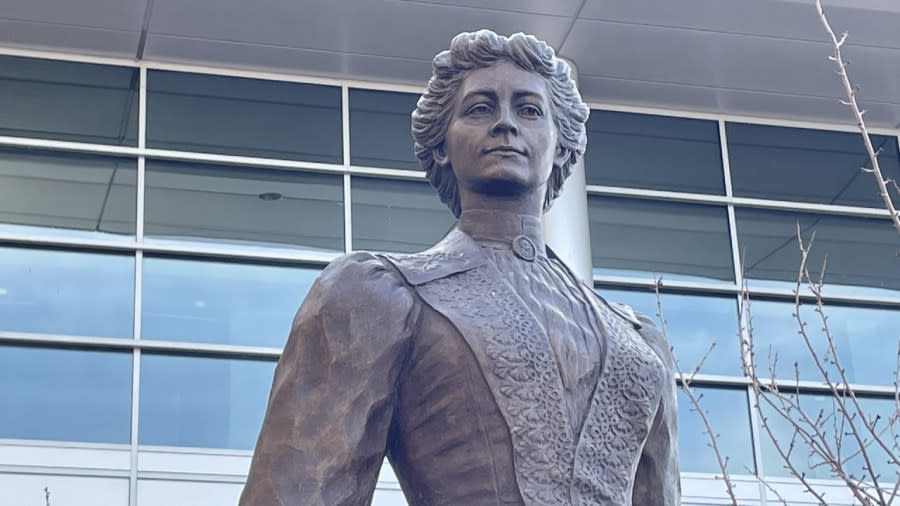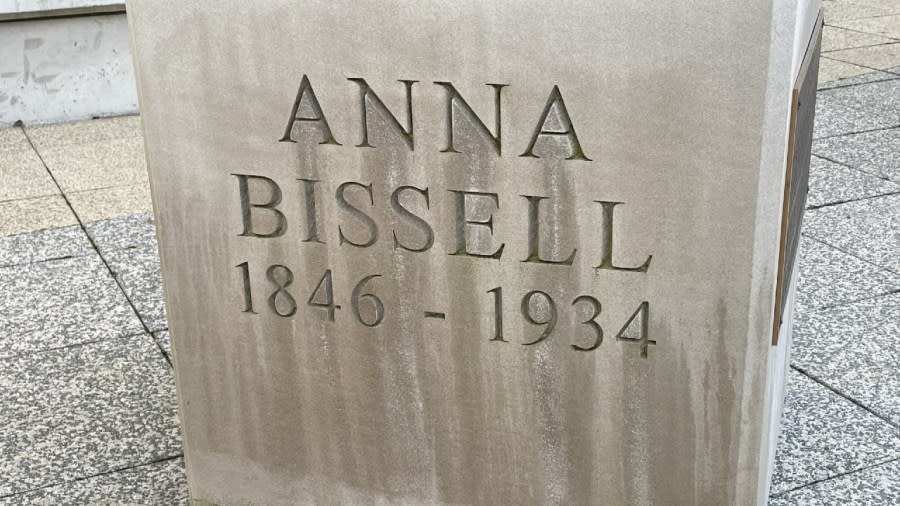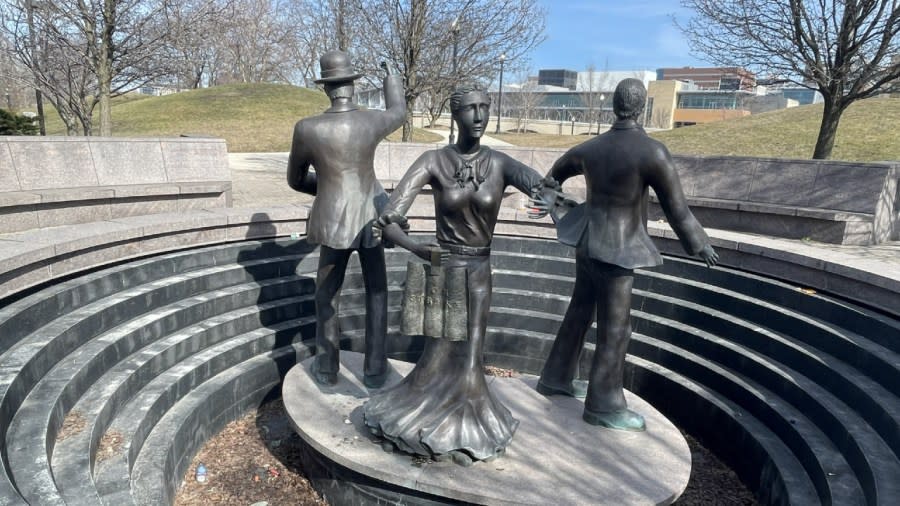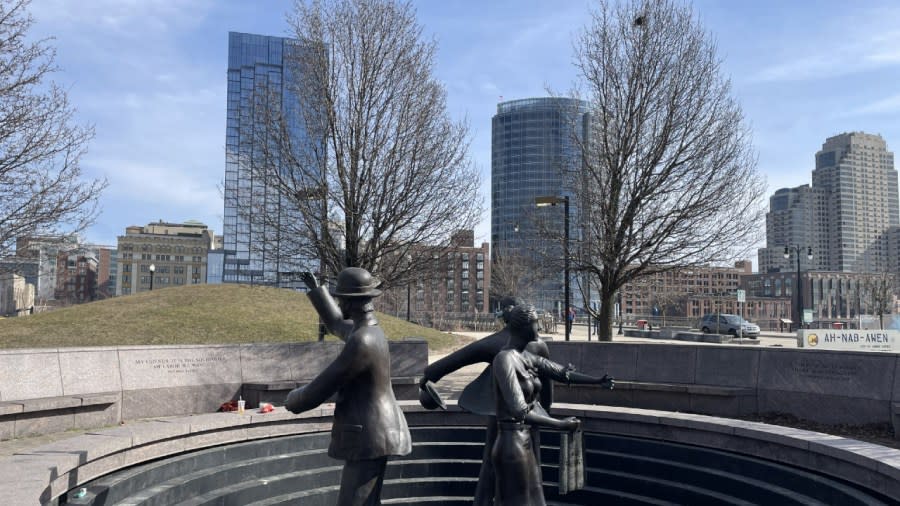Learn about Grand Rapids’ women legends through walking tour
- Oops!Something went wrong.Please try again later.
- Oops!Something went wrong.Please try again later.
- Oops!Something went wrong.Please try again later.
- Oops!Something went wrong.Please try again later.
GRAND RAPIDS, Mich. (WOOD) — Looking for a reason to get out and enjoy some early spring sunshine? Or looking to learn more about some of Grand Rapids’ female pioneers? You can do both while walking downtown.
The Greater Grand Rapids Women’s History Council has designed a walking tour of six statues to learn about some of the women who helped shape the community and the world at large.
If done in order, the tour covers approximately 2 miles and can be done in about 45 minutes. Here’s the order of the tour and a brief look at the women who inspired these statues:

BETTY BLOOMER FORD
The first stop celebrates former first lady Betty Bloomer Ford. Her statue sits just outside of the entrance to the Gerald R. Ford Presidential Museum.
Betty Ford was known not only for her endeavors as First Lady, but also for her candid honesty in sharing her addiction issues, encouraging others to seek help. (Matt Jaworowski/WOOD TV8) The statue of Betty Ford resides just feet from where the First Lady and President are now buried. (Matt Jaworowski/WOOD TV8) The statue of Betty Ford outside of the Gerald R. Ford Presidential Museum was installed in 2018 as part of the city’s Community Legends project. (Matt Jaworowski/WOOD TV8)
Ford is a household name in West Michigan, but the work she did goes far beyond Grand Rapids. The Central High School alumna worked alongside her husband for decades but was also known for her ability to be open and honest and to stand up for her own beliefs, even when they didn’t align with her husband’s or the Republican Party’s.
Sign up for the News 8 daily newsletter
Ford openly discussed her breast cancer diagnosis and her struggles with drug and alcohol addiction at a time when those conversations were taboo. Many historians credit her willingness to share her experience as a step toward breaking the stigma around health conversations. Instead of hiding her struggles, she amplified them and used her story and platform as a way to encourage others to seek help.
‘ADULATION: THE FUTURE OF SCIENCE’
“Adulation: The Future of Science” was installed in 2019 outside of the Michigan State University Research Center on Michigan Street. (Matt Jaworowski/WOOD TV8) The statue honors three pioneering scientists, Pearl Kendrick, Grace Eldering and Loney Clinton Gordon, for their role in developing a vaccine to prevent pertussis. (Matt Jaworowski/WOOD TV8) The three scientists, Pearl Kendrick, Grace Eldering and Loney Clinton Gordon, are believed to have saved the lives of millions of children with their pertussis vaccine. (Matt Jaworowski/WOOD TV8)
After a short walk through Ah-Nab-Awen Park, stop No. 2 sits outside the Michigan State University Research Center on Michigan Street.
“Adulation: The Future of Science” is two pieces, one representing three scientists and another of two children admiring their work. The three scientists depicted in the piece are Pearl Kendrick, Grace Eldering and Loney Clinton Gordon. All three were key in developing a vaccine that prevents pertussis, also known as whooping cough.
Breast cancer vaccine provides hope for local patient
Kendrick and Eldering started their research at the Michigan Department of Health laboratory in Grand Rapids and manufactured the first successful large-scale pertussis vaccine, along with improving other vaccine formulas.
Clinton Gordon also played a key role in the vaccine’s development, identifying the strain of pertussis that was used in the vaccine. Their work has likely saved the lives of millions of children around the world.
HELEN JACKSON CLAYTOR
Helen Jackson Claytor helped found what is now known as Grand Rapids’ Office of Equal Opportunity. (Matt Jaworowski/WOOD TV8) Helen Jackson Claytor was the president of the Grand Rapids YWCA and eventually served as the president for the entire organization. (Matt Jaworowski/WOOD TV8) The statue honoring Helen Jackson Claytor was installed in 2014 as part of the city’s Community Legends project. (Matt Jaworowski/WOOD TV8)
The longest walking stretch of the tour is to stop No. 3, a statue honoring Helen Jackson Claytor on the campus of Grand Rapids Community College. It resides in the Juan Olivarez Student Plaza, near the corner of Fountain Street and Winchester Place.
Claytor fought for equal rights in Grand Rapids for decades. She was appointed to a committee in the 1940s to study racial issues within the city. Her report ultimately led to the city’s first Human Relations Commission. To this day, the Office of Equity and Engagement is still a key part of the city’s infrastructure.
‘Suburban dream, urban crisis’: Redlining’s affect on Grand Rapids’ Black community
Claytor was also elected president of the Grand Rapids YWCA, the first Black woman to hold that role. She was also elected to the YWCA National Board of Directors in 1967 and eventually the president of the organization until she retired in 1973.
She served as an honorary board member for decades and assisted in projects at her church and across her community until her death in 2005.
ROSA PARKS
A statue of Rosa Parks was installed outside of Rosa Parks Circle in 2010. (Matt Jaworowski/WOOD TV8) A statue honoring Rosa Parks sits at the corner of Monroe Avenue and Monroe Center Street in downtown Grand Rapids. (Matt Jaworowski/WOOD TV8) The Rosa Parks statue is the only monument on the Women Legends walking tour to honor a woman without direct Grand Rapids ties. (Matt Jaworowski/WOOD TV8)
Stop No. 4 is the first statue that was not erected as part of the Community Legends Project funded by Peter Secchia and the first to celebrate a woman with no direct ties to Grand Rapids.
The statue of Rosa Parks sits outside of Rosa Parks Circle at the intersection of Monroe Avenue and Monroe Center. It depicts her standing triumphantly in front of a bus bench. While her arrest served as a flashpoint for the fight for racial equality, Parks proved to be a quiet and effective leader in the movement.
The civil rights icon eventually moved to Detroit in the 1960s and continued her push for equal rights. She helped John Conyers secure a seat in Congress and worked as his secretary for several years before retiring in 1988.
Sign up for the News 8 weekly recap newsletter
Upon her death in 2005, her casket was laid in honor in the rotunda of the U.S. Capitol. She was the first woman, the first American who had not been a U.S. government official and just the second Black person ever to receive the honor.
ANNA BISSELL
Anna Bissell is considered one of the first female CEOs in the history of the United States. Not only did she help her husband design and market the Bissell carpet sweeper, but she took over and expanded the company after his death. (Matt Jaworowski/WOOD TV8) Aside from being a successful CEO, Anna Bissell was also a philanthropist, socialite and mother of five children. (Matt Jaworowski/WOOD TV8) Glass ceiling aside, Anna Bissell was also a leader in progressive labor policies. She was one of the first to establish pension plans and workmen’s compensation for employees injured on the job. (Matt Jaworowski/WOOD TV8)
The journey to the fifth statue continues down Pearl Street and onto the Riverwalk Promenade behind DeVos Place. Near the rear lobby entrance is a statue of Anna Bissell, one of the original “boss ladies.”
Anna Bissell, of the Bissell Company, helped fine tune the designs of her husband Melville’s carpet sweepers and helped him found the business and open a manufacturing plant. However, when Melville Bissell died in 1889, instead of selling the business and living a life of luxury, Anna Bissell doubled down and took control herself, becoming one of the nation’s first female CEO’s.
The Sweet House: An inside look at a piece of Grand Rapids history
She is credited with taking the carpet sweeper from a regional phenomenon to an international product and with changing the sales pitch, convincing department stores that they should be courting her to carry her products. Bissell also played a key role in the country’s labor policies. She was one of the first CEOs to implement policies like workman’s compensation and pension plans.
Bissell was also an active philanthropist and socialite and did it all while raising five children.
‘SPIRIT OF SOLIDARITY’
The “Spirit of Solidarity” statue was installed in 2007 at Ah-Nab-Awen Park in downtown Grand Rapids. (Matt Jaworowski/WOOD TV8) The “Spirit of Solidarity” resides in Ah-Nab-Awen Park in the shadow of the Grand Rapids skyline. (Matt Jaworowski/WOOD TV8) Several quotes, including this one attributed to Frederick Douglass, surround the “Spirit of Solidarity” sculpture at Ah-Nab-Awen Park. (Matt Jaworowski/WOOD TV8)
The final stop of the tour doubles back across the promenade and uses Gillett Bridge to cross back into Ah-Nab-Awen Park.
The “Spirit of Solidarity” was installed in 2007 by the Labor Heritage Society of West Michigan to commemorate the anniversary of the 1911 Furniture Strike, when more than 6,000 workers walked off the job demanding better pay and work conditions.
On strike: The 1911 furniture workers’ war of attrition
The statue includes three bronze figures — two men and one woman — standing together. The strike lasted four months and effectively brought much of the city to a standstill. Most workers made do with a meager $5 weekly ration raised by other union workers to help them get by.
The designers made a point of including a woman in the statue to recognize the wives of the workers who stood by their side despite the economic hardships the strike brought. In one particularly violent incident, women hid rocks under their dresses for men to throw at buildings and strikebreakers who crossed the picket lines.
For the latest news, weather, sports, and streaming video, head to WOODTV.com.
